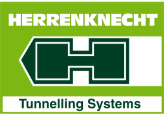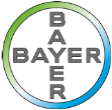Who is the VEM Group and how do they stand out in the Industrial Electric Machines industry?

Part 4
Ordering an Electric Motor
Watch the above animation in full, & Access other episodes now!
Signup for FREE to receive access >>>
Animated Video Tutorial Training Series - Part 4
Ordering an Electric Motor
Proper and correct purchase of an electric motor requires detailed technical information. Because choosing the wrong electric motor will cost you money and time.
According to the general definition, an electric motor is an electrical device that converts electrical energy into mechanical energy. This transformation is actually in the form of mechanical rotational movement. Therefore, the electric motor or electric motor has a fixed part or stator and a rotating part or rotor. Electric motors are widely used in starting household and industrial equipment. They are considered one of the main devices in economic and industrial development.
Electric motors can be divided into two main groups:
- AC electric motors
- DC electric motors
AC electric motors
AC electric motors are electric motors that are fed, started and operated by alternating current or electricity from the electrical energy network. This group of electric motors have different and diverse types that can be used depending on the type of use and operating conditions.
One of the types of AC electric motors that are used the most are rack rotor electric motors. These electric motors are very popular due to their simple construction, high strength, low depreciation and lightness. These electric motors are divided into asynchronous and synchronous groups.
Single-phase or three-phase electric motor
AC electric motors are divided into single-phase and three-phase types, three-phase electric motors are mostly used in the industry. Because the efficiency of single-phase electric motors is much lower than three-phase electric motors. Single-phase electric motors can be provided in the market up to the maximum power of 10 HP
Nominal frequency
The electric motor is made for two specific nominal frequencies of 50Hz and 60Hz and they exist in the market. The important thing about the nominal frequency is that the motor with a nominal frequency of 60Hz will lose about 10 to 15% of its output power if it is used at a frequency of 50Hz. For example, a 10KW motor with a nominal frequency of 60Hz, if it is used at a frequency of 50Hz, the power delivered to the load will be 9 kW. On the other hand, note that a motor with a rated frequency of 50Hz cannot be used in a 60Hz power grid.
The output mechanical power of the electro motor
The output power of an electric motor is expressed in kilowatts (KW) or horsepower (HP). This power is the same as the mechanical power of the electric motor, which is expressed in terms of speed and torque.
The working voltage of the electric motor
The working voltage of an electric motor is determined by whether it is single-phase or three-phase, as well as how the motor is connected to the power source. Based on this, in single-phase motors, a voltage is specified, which is the working voltage of the motor. Here, it is necessary to explain that if an electric motor is designed and produced in such a way that it can work with multiple voltages, then the map or numbers of the electric motor connection terminals for different voltages should be provided to the consumer along with the electric motor.
In three-phase motors, depending on the connection form, they can be connected to different voltages, in this case you will face two types of connections. Star connection which is denoted by Y and the other is triangle connection which is denoted by ∆.
Rotational speed of the electric motor
The number of revolutions of the AC electric motor is related to the frequency of the network feeding the motor, in such a way that by reducing or increasing the frequency of feeding the AC motor, its revolution can be reduced or increased. The number of revolutions of each AC motor is indicated on the nameplate. This cycle is determined in terms of revolutions per minute, which is indicated by rpm. When choosing an electric motor, you should pay attention to the rotation speed
Degree of protection or IP
Depending on the environmental conditions of the installation site, the electric motor must have a cover or protection against the penetration of external factors such as moisture and dust. To determine and standardize these specifications, a standard called Index Protection, which is called IP for short, has been created. IP actually defines the degree of protection of the electric motor against the penetration of moisture and dust. In this method of determining protection, a two-digit number is placed after the letter IP, which from the left indicates the first digit related to protection against dust penetration and the second digit indicates protection against water penetration.
Body size or frame size
The size of the body or the frame size of the electric motor is directly dependent on the power of the electric motor, so that with the increase in power, the size of the body or the frame size of the electric motor will increase. According to the IEC60034 standard, the size and dimensions of the motors produced by the manufacturers according to their power should be in the formats and dimensions determined by this standard. The most important size of a motor is actually the height of the center of the shaft compared to the base of the electric motor, which is represented by the letter H. This number specifies the size of the motor frame in millimeters.
Insulation category or insulation class of the electric motor
In the structure of the electric motor, electric current insulating materials are used to insulate the electric current carrying circuit from other parts of the electric motor. These insulators are generally solid insulators that are wound on the wires and coils and are placed between the coils and the coil with the stator core groove. In many cases, the insulation used in the insulation of electric motors is made of excellent materials or excellent resins.
Each of these materials can maintain their physical, chemical or electrical properties up to a certain temperature, which is called the maximum tolerable temperature. NEMA and ASTM standards have classified these materials into groups. So that electric motor manufacturers can specify the information related to the insulation used in the electric motor for the consumers on the electric motor specification plate using this classification.
For the accurate selection of an electric motor, many other factors are also effective, which we examine in more detail in our training workshops. For more information to attend the free course; Choosing an electric motor; Get in touch with us.

Let’s Connect. We’ll call you at your convenience.
































